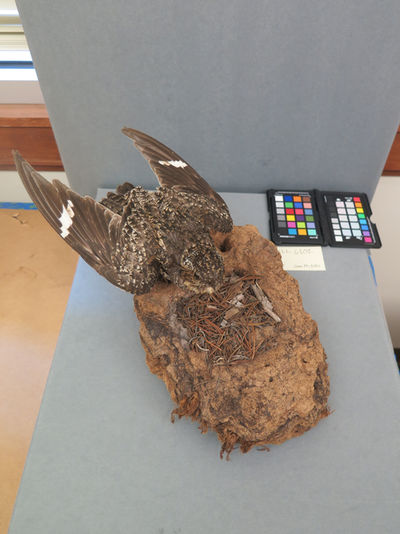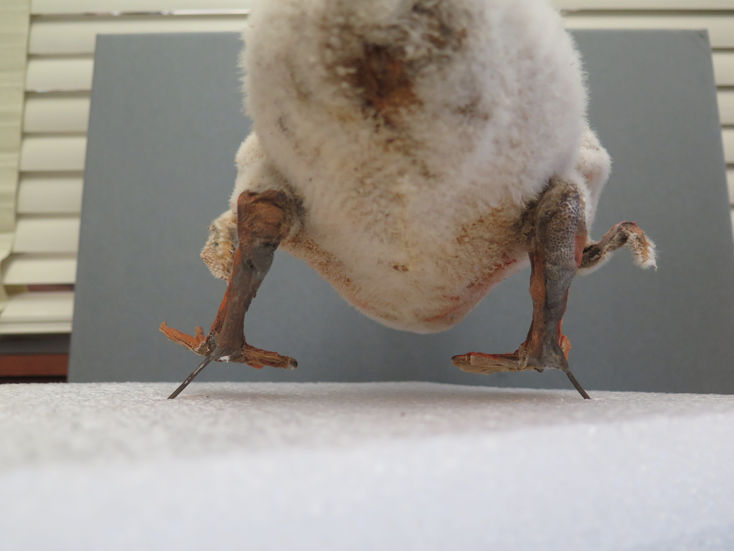
Dotan Conservation
Cultural Heritage Object Preservation

Avian Taxidermy
Fishing Bridge Museum
Yellowstone National Park
A collection of approximately 182 taxidermy bird mounts are on display at the Fishing Bridge Museum in Yellowstone National Park. The museum building was designed specifically for the display of taxidermy – as a center for park visitors to closely examine the different bird species, then be inspired to move outside to watch the living counterparts. The building was completed in 1931 and is on the National Registrar for Historic Landmarks. The mounted specimens were created around the same period (first quarter of the 20th century) by an unknown taxidermist(s). The full-body mounts are attached to display bases with habitat components such as branches and moss, with the exception of those in flying poses attached to the ceiling.Specimens that are not displayed in enclosed spaces are removed each season when the museum closes for the winter, but the encased specimens have remained in the building since its inception.
A previous project established the presence of arsenic and other heavy-metals throughout the collection which were commonly in the past to combat insect damage and infestation. While arsenic-based pesticides do pose health and safety issues, careful treatment and handling protocols enable safe and effective treatment of affected specimens.
In the summer of 2021, a project through Harpers Ferry Center, National Park Service headed by Fran Ritchie endeavored to treat more than 60 specimens. These treatments focused primarily on objects with structural instabilities such as those shown below:
**It is important to note that taxidermy treatments are often more "heavy handed" restorations with the conscious aim of accurately representing scientific species. These actions are taken with much care and consideration adhering to conservation ethics by using reversible methods and materials and documenting each step of the process.***
Great Blue Heron
The specimen sustained significant structural damage to the feet that may have been the result of their close relative position and the specimen's weight distribution. The outermost digit on the proper right (PR) foot was broken and the other toes were bent or cracked. The proper left (PL) foot was significantly more damaged with broken and detached digits. Several small aesthetic issues were also present on the specimen, such ruffled neck feathers, and mis-coloration on the legs (greenish-yellow), and beak (each side was painted differently) that did were not accurately represent the species.
Treatment included structurally stabilizing the feet by reconstructing the digits, as well as removing inaccurate colored paint on the legs and beak and repainting using reversible conservation-grade pigments to more accurately compliment the species natural coloration.
Night Hawk
During the taxidermy mounting process, an animal's hide is stretched around a sculpted mannequin. Over time, the fibers in the skin loose moisture and it begins to shrink. This inevitable natural change may lead to tears along vulnerable parts of the taxidermy, as seen in this Night Hawk specimen.
Treatment began by consolidating the torn skin edges to prevent feather loss. Japanese tissue "patches" were placed over the gap in the skin where the internal mount material was exposed. "Feather patches" were created by poking complimentary colored partridge feathers through a spun-bond polyester fabric. These sections were then adhered to the feather-less surface and set in place using a heating spatula. Individual partridge feathers were carefully placed and adhered to fill in areas of sparse plumage.
American White Pelican Chick
Taxidermy are complex objects composed of several composite materials. Historically, taxidermy mounts were created by wrapping cotton and other soft padding around metal armature to form the animal's bulk. Overtime, metal composed of iron reacts with elements in the environment and begins to corrode. The interaction between metal corrosion and neighboring skin can lead to deterioration as seen on this White Pelican Chick. The thin skin around the legs degraded and split around the corroded metal.
To prevent further metal deterioration and its adverse impact to the specimen skin, the armature was cleaned and coated. Once the metal was addressed a bulked adhesive was molded into the torn gaps between the skin at the back of the legs. Pieces of Japanese tissue were then placed over the the fill, and a heated spatula was used to smooth and sculpt the underlaying thermoplastic bulked filling. The patches were painted to compliment the species natural coloration.






































